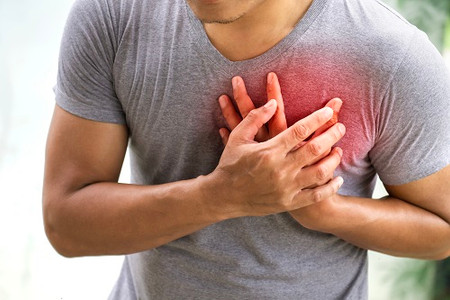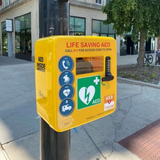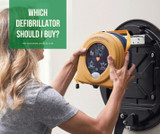Are defibrillators used for heart attacks?
A heart attack and a sudden cardiac arrest are two different conditions which are often confused with each other. A heart attack is usually caused due to a blockage in the coronary vessel that leads to the heart. This means the heart can no longer pump oxygenated blood around the body. Heart attacks are caused due to circulatory problems and are often related to lifestyle habits such as a poor diet and lack of exercise. When someone suffers a heart attack, symptoms include chest pain, shortness of breath and feeling weak.
On the other hand, a sudden cardiac arrest is usually caused by an electrical problem with the heart. They can occur to anyone regardless of age, gender or race and are unpredictable. Symptoms of a cardiac arrest normally mean the individual will fall unconscious and will not be breathing. If someone suffers a cardiac arrest and are not attended to instantly, their chances of survival are very slim.
Although cardiac arrests are mostly caused due to an electrical fault with the heart, conditions such as Cardiac Tamponade for example are different.This condition means that blood or fluid fills the space between the sac that encases the heart, and the heart muscle. This places extreme pressure on the heart causing it not function properly.
In order to assist someone who has fallen ill and is suffering a sudden cardiac arrest, you need to deliver defibrillation. You should first call an ambulance and begin CPR, then locate your nearest defibrillator. Defibrillators work by analysing the heart and deciding whether a shock needs administering. If a shock is needed, a defibrillator will deliver one to the heart to help it return to it’s natural pace. Thankfully, if defibrillation is administered within the first minute of someone suffering a cardiac arrest, their survival rate can be as high as 90%. For every minute that passes however, this figures reduces rapidly.
As cardiac arrests can happen at any time, you may often see defibrillators located in many public areas (known as PAD’s). They can be found in local villages, parks, supermarkets, offices and schools although, they can be located anywhere.
Sometimes a heart attack can lead to a cardiac arrest. Although this doesn’t happen all of the time, if it occurs, you would then treat the patient with a defibrillator. You don’t need to worry about shocking a patient if it is not needed as a defibrillator will scan the heart and never deliver a shock unless required.
It’s really easy to find your closest defibrillator. When taking a walk near your home, work or local town, take a look at your surroundings and see if there is one located nearby. There is also an online tool where you can check where all defibrillators in the country are located.
It may be that you are at work, shopping, at the sports centre or just a passer by when someone suffers a cardiac arrest which means you must act fast. Using a defibrillator greatly increases the chances of saving a persons life and as all defibrillators are designed for easy use, they can guide you through the process so you know that you are following the steps correctly.
The treatment process for those who have suffered both a heart attack and cardiac arrest is a lengthy one. Those who have been ill may attend a cardiac rehabilitation programme which involves exercise, information and education sessions. Some people may also have a pacemaker or implantable cardioverter defibrillator (ICD) fitted.
To summarise, the main differences between a heart attack and cardiac arrest are that heart attacks are circulatory problems and cardiac arrests are electrical. Defibrillators would only be used if a heart attack leads to a sudden cardiac arrest.
Recent Posts
-
Empowering Communities: The Lifesaving Impact of CPR on Restart a Heart Day
Every year, on and around October 16th, an important event takes place - Restart a Heart Day. This a …16th Oct 2023 -
Which home defibrillator?
80% of all out of hospital cardiac arrests occur at home. Defibrillators are often available in loca …4th Dec 2022 -
Which defibrillator should I buy?
There are many defibrillators available on the market and it can become overwhelming knowing which o …4th Nov 2022




